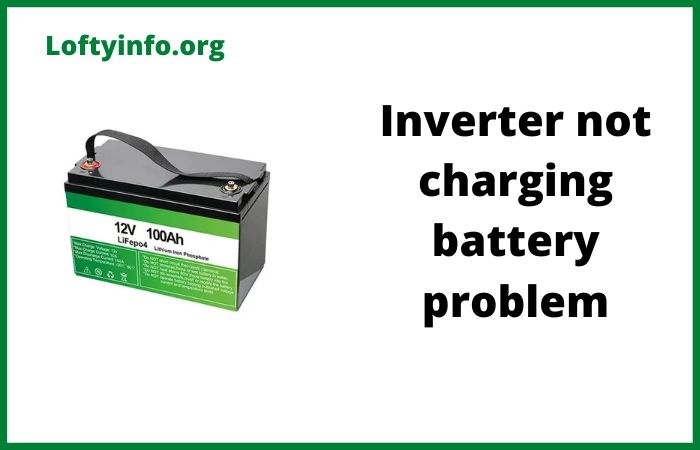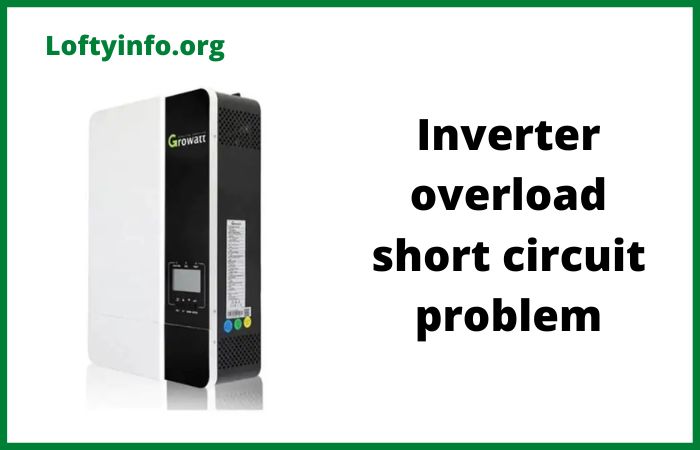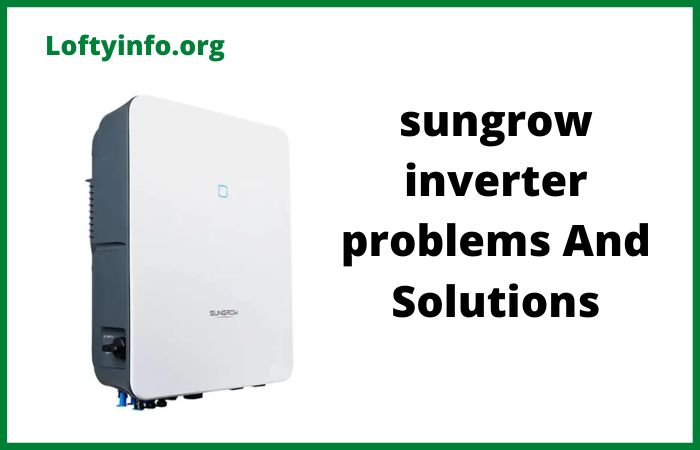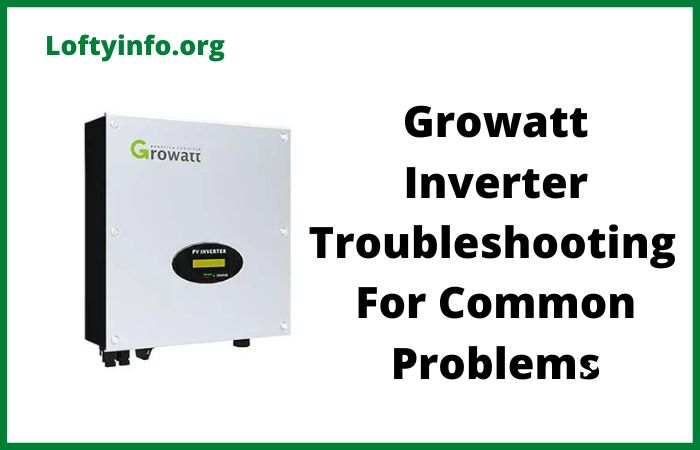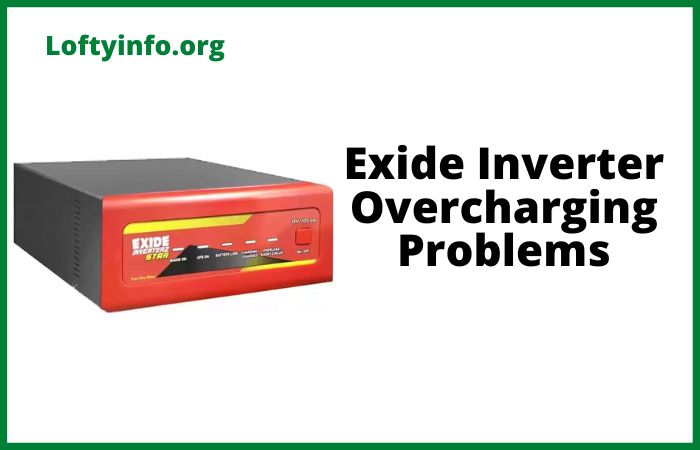Common Luminous Inverter Problems: Causes and Solutions
Power outages can disrupt daily life and business operations, making inverters an essential backup solution for homes and offices.
Luminous, as one of the leading inverter manufacturers has built a reputation for reliability and performance.
Like any electronic device, Luminous inverters can occasionally experience issues that affect their functionality.
Understanding these problems, their underlying causes and practical solutions can help you maintain your inverter’s optimal performance and extend its lifespan.
Common Luminous Inverter Problems
1) Battery Not Charging
One of the most frequent issues users encounter is when the inverter fails to charge the battery properly.
This problem can manifest in several ways, from slow charging to complete charging failure.
The primary cause is often loose or corroded battery terminals.
When connections aren’t secure, the charging current cannot flow efficiently.
Corroded terminals create resistance, preventing proper charging.
A faulty charging circuit within the inverter can also be responsible, as can damaged or aging batteries that have lost their ability to hold a charge.
Sometimes, incorrect battery selection or using batteries with specifications that don’t match the inverter’s requirements leads to charging problems.
Solution and Troubleshooting:
Start by inspecting the battery terminals thoroughly. Turn off the inverter and disconnect the battery connections.
Clean the terminals using a wire brush and a mixture of baking soda and water to remove corrosion.
Ensure the connections are tight and secure when reconnecting.
Check the battery water level if you’re using a tubular battery, distilled water should be added if levels are low, but never overfill.
Test the battery voltage using a multimeter.
A healthy 12V battery should read between 12.5V and 13V when fully charged.
If the voltage is significantly lower, the battery might need replacement.
Verify that the charging current is flowing by checking the inverter display panel for charging indicators.
f the problem persists after these checks, the charging circuit board may need professional inspection or replacement.
2) Continuous Beeping or Alarm Sounds
A persistently beeping inverter indicates that something requires immediate attention.
While occasional beeps during power transitions are normal, continuous alarms signal underlying problems.
Overload conditions are the most common culprit.
When the total power consumption of connected appliances exceeds the inverter’s capacity, it triggers an alarm to prevent damage.
Low battery voltage also causes continuous beeping, as the inverter warns that the backup time will be limited.
A faulty battery that cannot maintain adequate voltage under load, loose wiring connections or internal component failures can also trigger alarm conditions.
Solution and Troubleshooting:
First, calculate your total load.
Add up the wattage of all appliances connected to the inverter.
If this exceeds 70-80% of the inverter’s rated capacity, disconnect some devices.
Remember that appliances with motors or compressors (like refrigerators) draw more power during startup.
Check the battery voltage both during charging and under load conditions.
If voltage drops dramatically when loads are connected, the battery might be weak or undersized for your requirements.
Inspect all wiring connections between the battery, inverter and distribution board for any loose connections or signs of overheating.
If you’ve ruled out overload and battery issues, navigate through the inverter’s menu settings to check for any error codes displayed.
Consult the user manual to interpret these codes.
Some Luminous models allow you to adjust sensitivity settings that might be triggering false alarms.
If the beeping continues without an identifiable cause, contact a certified technician to inspect internal components.
3) Inverter Not Turning On
When your inverter fails to power on completely, it can be concerning, especially during an outage.
This represents one of the more serious common Luminous inverter problems.
A completely dead battery is often responsible.
If the battery voltage has dropped too low, the inverter’s protection circuits prevent it from operating to avoid damaging the battery further.
Blown fuses or tripped MCBs (Miniature Circuit Breakers) in the inverter’s circuit protection system can also prevent startup.
Internal component failure, damaged control boards or faulty power switches might be at fault. Sometimes, incorrect installation or wiring issues prevent the inverter from receiving power properly.
Solution and Troubleshooting:
Begin by checking if the inverter is receiving input power.
Verify that the main power switch is on and that the wall socket has electricity.
Use a voltage tester to confirm.
Check the MCB or fuse box connected to the inverter, reset any tripped breakers or replace blown fuses with the correct rating.
Inspect the battery connections carefully.
Even if terminals appear connected, they might not be making proper contact.
Remove and reconnect them, ensuring they’re tight.
Measure the battery voltage, if it reads below 10V for a 12V battery, the battery is deeply discharged and might need slow charging with an external charger before the inverter will operate.
Look for any visible signs of damage on the inverter panel, including burn marks, unusual smells, or bulging capacitors.
Check if any indicator lights illuminate when you attempt to turn on the inverter.
If absolutely nothing happens, no lights, sounds or display,the internal power supply or control board may have failed and requires professional repair.
4) Short Backup Time
Experiencing insufficient backup time during power cuts is frustrating and defeats the inverter’s primary purpose.
When your inverter provides significantly less backup than expected, several factors could be responsible.
An aging or degraded battery is the most common reason for reduced backup time.
Batteries typically last 3-5 years depending on usage and maintenance, after which their capacity diminishes.
Overloading the inverter forces the battery to discharge faster than its rated capacity.
Insufficient charging time between power outages means the battery doesn’t reach full capacity.
High power consumption appliances drain batteries quickly.
Low battery water levels in tubular batteries reduce their efficiency.
Additionally, high ambient temperatures accelerate discharge rates.
Solution and Troubleshooting:
Conduct a battery capacity test.
Fully charge the battery, then disconnect the mains supply and run a known load (like a few lights totaling 100-200 watts).
Time how long the battery lasts and compare this to the manufacturer’s specifications.
If backup time is significantly less than expected, battery replacement might be necessary.
Check battery water levels for tubular batteries.
Top up with distilled water to the indicated level, but avoid overfilling.
Clean the battery terminals and ensure connections are corrosion-free, as poor connections increase resistance and reduce efficiency.
Reduce your load during power outages.
Avoid running high-consumption appliances like air conditioners, water heaters or electric kettles on inverter power.
Use LED lights instead of incandescent bulbs to conserve energy.
Ensure your inverter has adequate charging time, most batteries need 8 to 10 hours to charge fully after complete discharge.
Consider whether your battery capacity matches your power needs.
If you consistently run high loads, upgrading to a higher capacity battery or adding an additional battery (if your inverter supports it) might be necessary.
Keep the battery and inverter in a cool, well-ventilated area to prevent heat-related efficiency losses.
5) Display Panel Not Working
The display panel provides crucial information about your inverter’s status, battery level and operational mode.
When it stops working, you lose visibility into your system’s health.
Loose connections to the display panel can cause it to malfunction or go blank.
The display unit itself might be damaged due to voltage fluctuations or physical impact.
Internal wiring issues or a faulty control board can prevent the display from receiving power or data.
Sometimes, incorrect settings or a software glitch causes display problems.
In some cases, the inverter might be functioning normally despite the display not working.
Solution and Troubleshooting:
First, verify that the inverter itself is working by checking if it provides backup during a power outage, even though the display is blank.
This helps determine if the problem is isolated to the display.
Try resetting the inverter.
Turn off the mains supply, disconnect the battery, wait for 2-3 minutes, then reconnect everything in reverse order.
This can resolve software glitches affecting the display. Check if there’s a separate fuse or connection for the display panel, some models have dedicated protection circuits.
Inspect the ribbon cable or connector between the display panel and main board (this requires opening the inverter casing, which should only be done if you’re comfortable with electronics or by a technician).
Ensure all connections are secure and undamaged.
If your inverter model has adjustable display settings, check if the brightness has been accidentally set to minimum or if the display has been disabled through the menu.
Consult your user manual for navigation instructions.
If none of these steps work, the display unit likely needs replacement, which should be done by an authorized service center to maintain warranty coverage.
6) Inverter Switching to Battery Mode Despite Mains Power Available
When your inverter frequently switches to battery mode even though mains electricity is available, it indicates sensing or relay problems.
This causes unnecessary battery discharge and charging cycles, reducing battery life.
Unstable or fluctuating mains voltage outside the inverter’s acceptable range causes it to reject mains power and switch to battery mode.
The inverter’s voltage sensing circuit might be faulty or improperly calibrated.
Loose connections in the input wiring or at the distribution board can cause intermittent power supply.
A malfunctioning change-over relay that doesn’t properly detect or switch between mains and battery power is another common cause.
Sometimes, incorrect sensitivity settings make the inverter overly reactive to minor voltage variations.
Solution and Troubleshooting:
Monitor your mains voltage using a multimeter over several hours.
Check during different times of day when power fluctuations are more common.
If voltage regularly drops below 170V or exceeds 260V, your mains supply is unstable.
Consider installing a voltage stabilizer before the inverter to regulate incoming power.
Access your inverter’s menu settings and check the voltage range parameters.
Many Luminous inverters allow you to adjust the acceptable voltage window.
Widening this range slightly can prevent unnecessary switching but don’t set it too wide as this could allow harmful voltages through.
Inspect all input connections thoroughly.
Tighten any loose terminals at the inverter input, MCB box and main distribution board.
Check for any signs of overheating or burning at connection points, which indicate poor contact or undersized wiring.
Test the change-over relay function.
When mains power is available, you should hear a distinct click when the inverter switches modes.
If this relay is silent or makes unusual noises, it might be failing.
Relay replacement requires technical expertise and should be performed by qualified personnel.
If you’ve addressed voltage stability, connections, and settings but the problem continues, the control circuit or voltage sensing components may need professional diagnosis and repair.
Maintaining Your Luminous Inverter
Prevention is always better than cure when dealing with common Luminous inverter problems.
Regular maintenance significantly reduces the likelihood of issues and extends your system’s lifespan.
Check battery water levels monthly for tubular batteries and top up with distilled water as needed.
Clean battery terminals every three months to prevent corrosion.
Keep the inverter and battery in a cool, dry, well-ventilated location away from direct sunlight and moisture.
Ensure adequate charging time, avoid frequent deep discharges and allow the battery to charge fully regularly.
Test your backup system monthly by deliberately cutting mains power to verify everything works correctly.
Avoid overloading your inverter consistently.
While occasional peak loads are manageable, running at or near maximum capacity continuously strains components and reduces lifespan.
Schedule professional servicing annually to check internal components, connections and perform diagnostic tests that aren’t possible with basic troubleshooting.
Understanding these issues and their solutions empowers you to address minor problems quickly while knowing when to seek professional help for complex issues.
With proper care and timely troubleshooting, your Luminous inverter will provide reliable backup power for years to come.
common luminous 950 inverter charging problems
Why your inverter fuse keeps blowing frequently
Causes of Luminous inverter automatic off problem
Amaron inverter overload problems
Causes of luminous inverter high voltage problems
Common solax inverter problems and solutions explained
How common goodwe inverter problems happens
Common sungrow inverter problems and solutions guide
Common growatt sp2000 problems
Common victron inverter problem
Luminous inverter troubleshooting
Luminous zelio 1100 inverter problems
Common luminous battery backup problems
Why luminous inverter shows overload without load
Common 3116 cat engine problems
How to configure inverter correctly before use after installation

